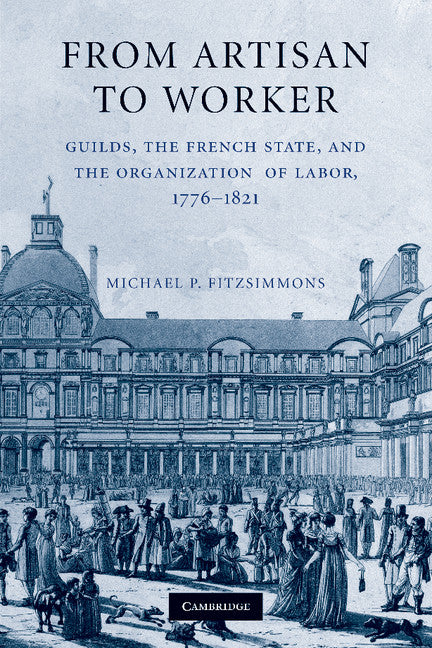Freshly Printed - allow 8 days lead
Couldn't load pickup availability
From Artisan to Worker
Guilds, the French State, and the Organization of Labor, 1776–1821
Examines the debate over the potential reestablishment of guilds that occurred inside and outside the French government from 1776 to 1821.
Michael P. Fitzsimmons (Author)
9781107626898, Cambridge University Press
Paperback / softback, published 2 January 2014
300 pages
23.4 x 15.6 x 1.7 cm, 0.46 kg
'Fitzsimmons brilliantly describes how the political context of the Revolution shaped the emergence of new kinds of institutions to coordinate social and economic behavior and new ideals of social and economic liberty. The work revises our understanding of the relationship between work and revolution and offers real insights into the many paths of economic modernization.' James Livesey, University of Sussex
From Artisan to Worker examines the largely overlooked debate over the potential reestablishment of guilds that occurred from 1776 to 1821. The abolition of guilds in 1791 overturned an organization of labor that had been in place for centuries. The disorder that ensued - from concerns about the safety of the food supply to a general decline in the quality of goods - raised strong doubts about their abolition and sparked a debate both inside and outside of government that went on for decades. The issue of the reestablishment of guilds, however, subsequently became intertwined with the growing mechanization of production. Under the Napoleonic regime, the government considered several projects to restore guilds in a large-scale fashion, but the counterargument that guilds could impede mechanization prevailed. After Bonaparte's fall, the restored Bourbon dynasty was expected to reorganize guilds, but its sponsorship of an industrial exhibition in 1819 signaled its endorsement of mechanization, and after 1821 there were no further efforts to restore guilds during the Restoration.
Introduction
1. The decline and demise of guilds, 1776–91
2. The new regime begins, 1792–9
3. The re-emergence of guilds as a policy issue, 1800–11
4. The triumph of mechanization, 1812–21
Conclusion.
Subject Areas: Economic history [KCZ], Modern history to 20th century: c 1700 to c 1900 [HBLL], European history [HBJD]


